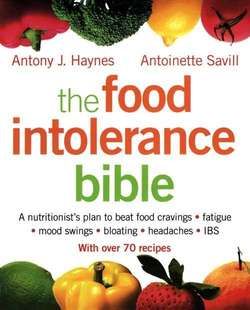Читать книгу The Food Intolerance Bible: A nutritionist's plan to beat food cravings, fatigue, mood swings, bloating, headaches and IBS - Antoinette Savill, Antoinette Savill - Страница 57
2 What Tests Can Confirm Food Intolerance?
ОглавлениеPlease note that if the results for any of the tests in this book are positive, you are advised to notify your doctor.
As mentioned in Chapter 1, diagnosing a food intolerance is not an exact science because of the many different types of reactions that can occur. It is possible for an individual to have more than just one type of reaction to a food, and so can be difficult to pin down exactly what is causing symptoms.
This is not to say that the tests available are inaccurate; it is more a question of whether they can pick up everything you are reacting to. No one single test will do this for you, except perhaps the elimination diet followed by reintroduction and a careful observation of your symptoms.
There will always be some for whom a certain test works wonderfully well, while others will find it of no help at all. While this charge can be levelled at any kind of test, this makes it all the more important to learn a little more about a method of testing before trusting it absolutely. Also, with food intolerance testing it is necessary to put the results into context with an individual’s particular symptoms and overall health. This is why it is useful to learn about any studies that have been conducted on these tests and what practitioners have to say.
This chapter tells you about the ways you can verify the presence of a food intolerance through some means of testing, which takes various forms including laboratory testing, pulse testing, elimination diets with reintroduction challenges, Vega tests, kinesiology, skin prick test, RAST (Radio Allergo Sorbent Test, now outdated) and electroacupuncture (EAV). This chapter reviews the range of tests and some of the studies that have been conducted to ascertain their efficacy, with the aim of helping you to decide which test is most appropriate for you.
What Is ELISA?
ELISA is a technique of analysis used for a variety of tests, not just food intolerance. The letters stand for Enzyme-Linked ImmunoSorbent Assay. It is a highly accurate technique. Many food intolerance tests use this technology, including those recommended in this book (see Resources chapter).
The trouble is, no test that is useful for diagnosing food intolerances has had masses of solid research performed on it. One of the main reasons for this is that they are not mainstream medical tests for which large-scale studies are conducted, and they are very expensive to undertake. Also, the nature of such studies usually favours the use of one active substance (e.g. drug) on one outcome (e.g. pain) which does not lend itself well to assessing multiple food intolerances with multiple symptoms.
Now let’s take a look in more detail at each of these.
